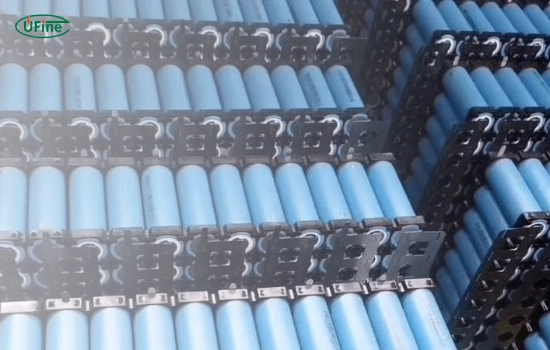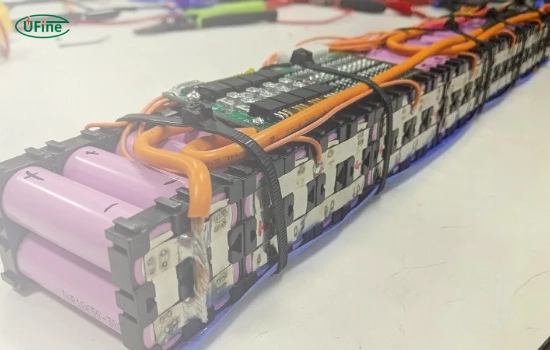The demand for custom 18650 battery packs has skyrocketed in various industries due to their versatile applications and adaptability to specific needs. This article focuses on elucidating the comprehensive process of building a customized 18650 battery pack, encompassing everything from selecting the appropriate 18650 cells to configuring the pack and understanding the pricing dynamics. By delving into these intricacies, you will understand the nuances of creating tailored power solutions.
Part 1. How to build an 18650 battery pack?
1. Identify Application: Understand the specific application or project the battery pack will power.
Consider power requirements, size constraints, and operational conditions.
2. Cell Selection: Research and select 18650 cells based on the identified application’s needs.
Evaluate cells based on capacity, discharge rate, voltage, and compatibility with the project’s demands.
3. Battery Configuration: Plan the arrangement of selected cells to meet the voltage and capacity requirements. Choose between Series or parallel connections based on the desired output and size limitations.
4. Shell or Casing: Select an appropriate casing or shell to house the configured battery pack.
Ensure the casing provides protection and proper insulation and allows for convenient integration into the application.
5. Connector and Wiring: Choose suitable connectors and wiring based on the battery pack’s configuration and application requirements. Ensure proper insulation and secure connections to prevent short circuits or power loss.
Part 2. Choose your 18650 cell
Consider Power Requirements
High-Performance Flashlights
- High-lumen flashlights demand cells with high discharge rates and moderate to high capacities.
- Cells with capacities around 3000mAh and discharge rates of 15-20A suit these applications well.
Portable Power Banks
- Power banks require cells with higher capacities to extend device usage between charges.
- Opt for cells with capacities ranging from 3000-3500mAh for these purposes.
Consider Size Limitations
Slim Devices
- Slim laptops or tools often need thinner cells with moderate capacities.
- Cells with capacities around 2500-2600mAh and reasonable discharge rates are suitable for these applications.
Compact Drones
- Compact drones or UAVs require small, lightweight cells with reasonable capacities.
- Consider cells with capacities around 3000mAh and moderate discharge rates for these devices.
Operating Conditions
Extreme Temperature Environments
- Applications in extreme temperatures benefit from cells with stable performance across various temperature ranges.
- Cells with good temperature performance and lower internal resistance are preferred for such conditions.
Medical Devices
- Medical equipment requires reliable power sources with stable performance and safety features.
- Opt for cells with consistent performance and necessary safety features for medical applications.
Part 3. Configure your 18650 battery pack
18650 in Series
Increasing Voltage with Series Configuration:
- Series connections involve linking cells end-to-end to amplify voltage while maintaining the same capacity.
- For example, we connect three 3.7V cells in Series, resulting in an output of 11.1V.
Application of Series Configurations:
- Devices requiring higher voltage outputs, like some high-power flashlights or RC vehicles, often utilize series connections for increased voltage.
18650 in Parallel
Enhancing Capacity through Parallel Configuration:
- Parallel connections involve linking cells to increase the overall capacity while maintaining the same voltage.
- For instance, it is combining four 2500mAh cells in parallel results in a total capacity of 10,000mAh.
Usage of Parallel Configurations:
- Devices demanding extended runtime, such as specific portable electronic devices or backup power systems, benefit from parallel connections to augment capacity.
Series-Parallel Combination
Optimizing Voltage and Capacity:
- Series-parallel configurations combine the benefits of increased voltage and capacity.
- A 2S2P setup, for instance, offers higher voltage and cumulative capacity by arranging cells in a series-parallel configuration.
Utilization of Series-Parallel Configurations:
- Some complex power systems or energy storage units require tailored series-parallel arrangements to balance voltage and capacity for efficient operation.
Battery Management Systems
Implementing Battery Protection Boards:
- Incorporating Battery Management Systems (BMS) or protection boards safeguards against overcharging, over-discharging, and short circuits.
- A BMS ensures individual cell monitoring and activates safety protocols when thresholds are exceeded, prolonging the battery pack’s lifespan.
Role of Protection Circuitry:
- Many modern electronic devices, particularly lithium-ion batteries, integrate protection circuitry to enhance safety and prevent potential hazards during usage and charging.
Part 4. Factors influencing the cost of customized 18650 battery packs
Cell Quality and Brand
- The quality and brand reputation of 18650 cells significantly impact the price.
- Premium cells from renowned manufacturers often come at a higher cost due to their superior performance and reliability.
Capacity and Discharge Rate
- Higher capacity cells or those with exceptional discharge rates tend to be more expensive.
- Cells with larger capacities or higher discharge rates generally have a higher price tag due to their advanced specifications.
Complexity of Assembly
- Intricate configurations or specialized assembly requirements contribute to increased costs.
- Customizing the assembly process for specific applications or unique configurations adds to the overall pricing.
Additional Features and Customization
- Incorporating special features like protection circuitry or custom-designed casings raises the overall cost.
- Tailoring battery packs to meet specific design or performance criteria adds expenses.
Economies of Scale
- Larger order volumes often lead to reduced per-unit pricing.
- Bulk orders benefit from economies of scale, allowing for negotiating lower prices per unit.
Customization Volume
- Small-scale or highly customized orders incur higher costs due to specialized manufacturing or handling requirements.
- Smaller customized orders could lead to higher prices than mass-produced battery packs.
Market Fluctuations
- Market conditions, including supply and demand fluctuations, influence battery pack pricing.
- Changes in raw material costs or market demands impact the final pricing structure.
Part 5. FAQs
-
Can I mix different 18650 cell brands or capacities in a custom pack?
Mixing different cell brands or capacities in the same pack is not advisable, as it can lead to imbalanced charging, inconsistent performance, and potential safety hazards. Consistency in cell specifications is crucial for optimal pack performance and longevity. -
What safety measures should be considered when building a custom 18650 battery pack?
Safety is paramount when building a custom 18650 battery pack. Ensure proper insulation, avoid short circuits, use protective circuitry where necessary, and follow manufacturer guidelines for charging and discharging. Proper handling and adherence to safety protocols significantly reduce the risk of accidents or failures. -
Are custom 18650 battery packs suitable for electric vehicles (EVs)?
Custom 18650 battery packs have found applications in EVs due to their high energy density, reliability, and scalability. However, their suitability depends on specific EV requirements and the ability to meet performance, safety, and regulatory standards. -
How can I ensure the longevity of a custom 18650 battery pack?
To extend the lifespan of a custom 18650 battery pack, avoid deep discharges, charge within recommended voltage limits, implement proper cooling mechanisms, and conduct regular maintenance checks to detect and address any issues early on.
Related Tags:
More Articles

LiPo Battery Discharge Rate Guide & Calculation Tips
Understand LiPo battery discharge rates, C-ratings, and how to calculate max current. Essential guide for RC, drones, and electronics users.
High‑Capacity 3S LiPo Batteries: 5000 mAh vs. 10000 mAh
Compare 3S LiPo 5000mAh vs 10000mAh batteries by weight, power, and use. Find the best fit for your drone, RC car, or boat setup.
Top 5 Applications for Small 3S LiPo Batteries
Small 3S LiPo batteries power drones, RC gear, wearables, and robotics with high energy and low weight. Making them ideal for compact electronics projects.
Building and Charging Your Own 3S LiPo Pack: A Step‑by‑Step Guide
Learn how to build, balance, and charge a 3S LiPo battery pack safely at home with this complete DIY guide for hobbyists and beginners.
How to Choose the Right LiPo Battery Plug Type?
Discover the best LiPo battery plug types, how to choose them, and expert tips for safe usage, soldering, and maintenance.





